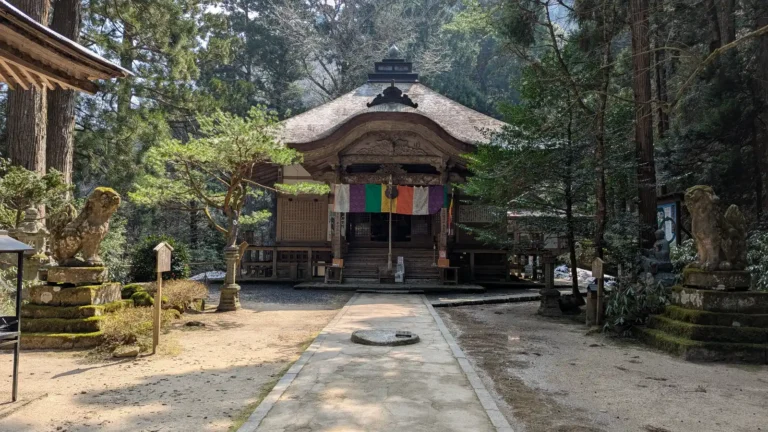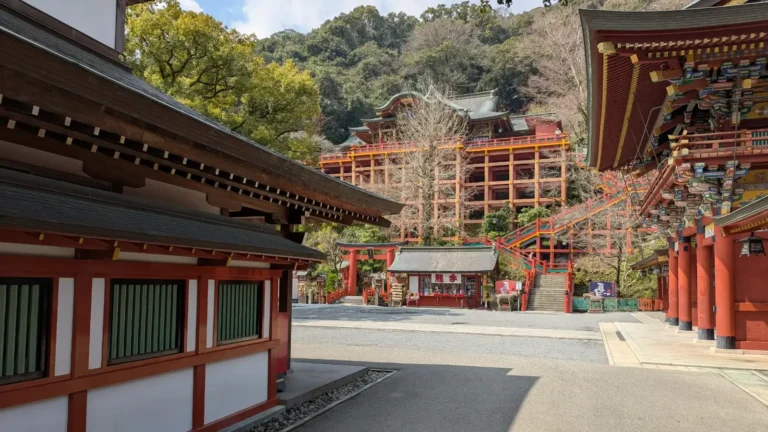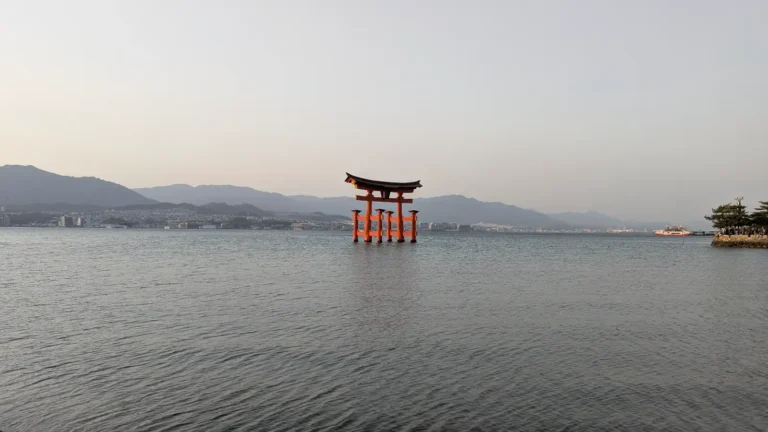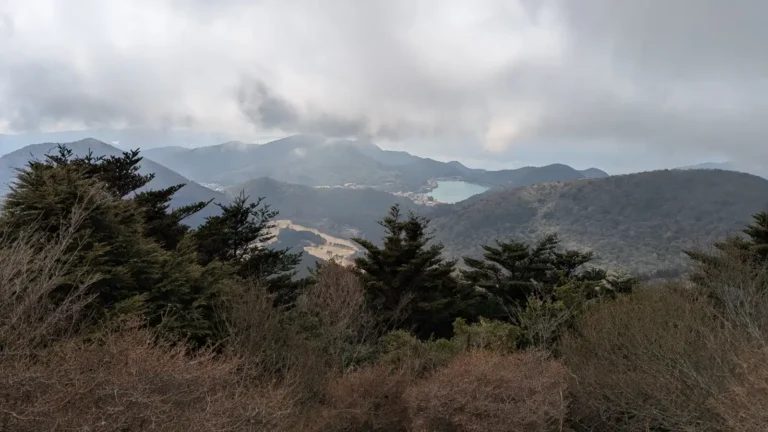Saga: A JOTM Journey – Sacred Stillnes
Some days move fast.
Others ask you to move slowly.
And then there are days like this one, where the past doesn’t sit behind you, but beneath your feet, waiting not to be remembered, but to be felt.
We began in a wide plain of dry grass and moats, where wooden towers rise above reconstructed homes and ancient burial mounds rest quietly beneath the sky.
There were no grand monuments, no crowds.
Just wind moving through thatched roofs and silence folded into earth. A place where Japan’s first villages once stood, and where echoes of the Yayoi people still hum beneath the soil.
From there we followed water into forest.
A narrow road wound through fields and pine, ending at a waterfall so clear and continuous it felt like the mountain was still trying to speak.
No signs, no stories. Just water falling with purpose.
We ended beneath something older than all of it.
Past shrine gates and under cedar shade, we found ourselves standing before a tree so massive and still that even the air around it seemed to pause.
More than 3,000 years old, Takeo’s camphor tree doesn’t need to show its age, it simply exists. Present. Rooted. Listening.
This wasn’t a journey through time.
It was a day spent inside it.
Yoshinogari Historical Park (吉野ヶ里歴史公園): Where Time Is Woven from Earth
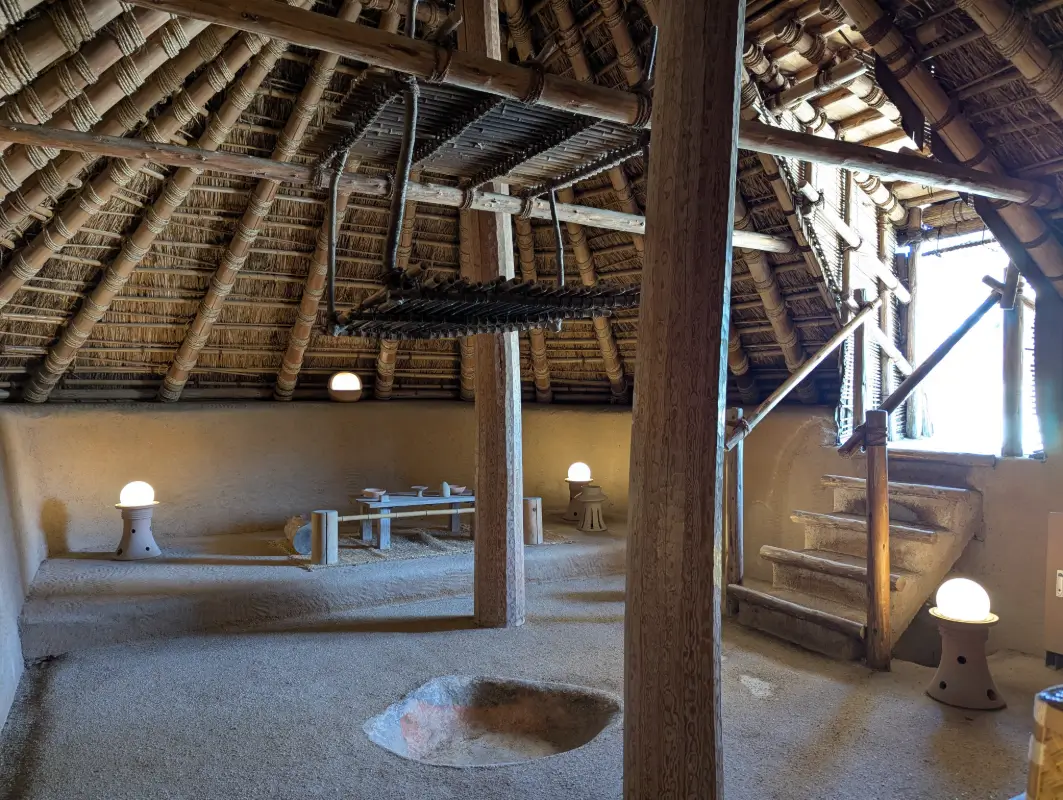
At first glance, it doesn’t feel ancient.
You park near a small visitor center. Fields stretch out flat and golden, crossed by narrow paths and clusters of wooden structures that seem almost too perfect in their symmetry.
But walk a little further, beyond the modern railings and the last signs in English, and something shifts.
You’re not walking through a museum.
You’re walking through a memory that has been rebuilt from the soil up.
This is Yoshinogari Historical Park, the largest and most complete reconstruction of a Yayoi-period settlement in Japan.
The original village dates back over 2,000 years, before temples, before castles, before written language.
A time when Japan was just beginning to take shape through rice, ritual, and the first signs of communal leadership.
Inside the moated enclosure, watchtowers rise on timber stilts, their platforms once used to survey the landscape, and perhaps to watch for neighboring clans. Pit dwellings line the village in orderly rows, roofed with straw, their entrances low and dark. Burial mounds rest just beyond, ringed in ceremonial posts. A great hall stands at the center, its purpose debated, its importance undeniable.
The details are precise, based on decades of excavation.
But the feeling isn’t about accuracy.
It’s about atmosphere.
You feel the weight of what was here, and what was lost, and then painstakingly returned.
There were no guides shouting over groups. No ambient soundtrack.
Just the wind through reeds. A hawk overhead.
And the distant sound of wooden steps as a schoolchild climbed to the top of a tower and looked out at a world she didn’t have words for.
We lingered longer than expected. Not because there was more to see, but because the space asked us not to rush.
You don’t leave Yoshinogari with facts.
You leave with the sense that Japan began quietly.
And that quiet is still here, if you know how to listen.
Kiyomizu Waterfall (清水の滝): Where the Forest Speaks in Water
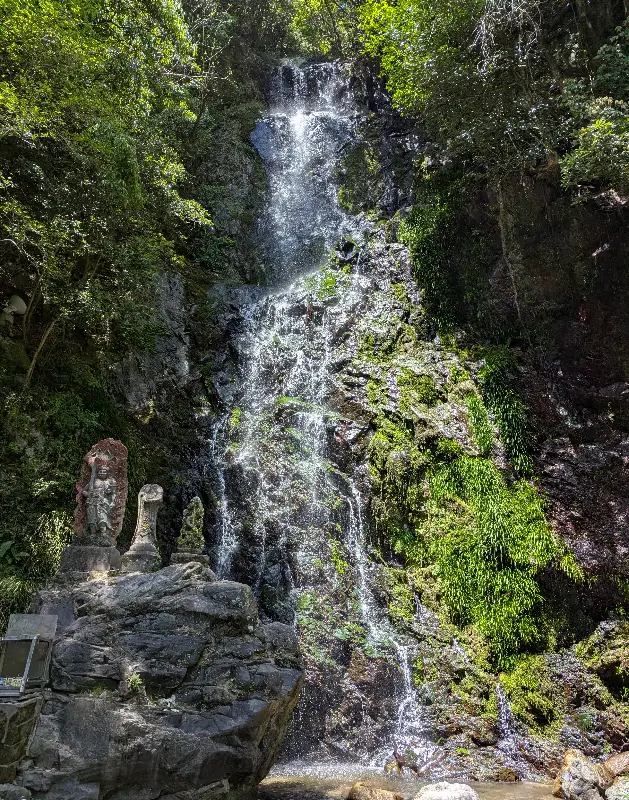
The road narrowed as we left the fields behind.
It curved through quiet neighborhoods, trees beginning to rise where houses began to fade. And then, before we saw anything, we heard it… clear, constant, unmistakable.
Kiyomizu no Taki doesn’t hide.
It pours.
Tucked into a leafy ravine outside the town of Ogi, this waterfall drops 75 meters in a single, sheer line. Cutting through layers of volcanic rock with the same steady force it has held for centuries. There’s no entry fee, no fence, no tour route. Just a simple stone path, leading to the base, where water meets stone without interruption.
Locals sometimes come here to pray. Sometimes just to breathe.
A few folded paper offerings hung near the trail.
Incense smoldered quietly beside a Jizō statue.
We didn’t see anyone else that morning, just spray in the air, drifting slow and cold, and moss climbing the trees with deliberate patience.
There’s a purity to the sound, not loud, but whole.
It doesn’t compete. It doesn’t ask.
It just continues.
Water has always been sacred in Japan.
Not just for what it cleanses,
but for what it remembers.
And here, beneath this unassuming mountain,
it felt like we’d stepped into something that had been flowing long before we arrived…
and would continue long after we had left.
Takeo Shrine (武雄神社): Where the Gods Wait Beneath the Bark
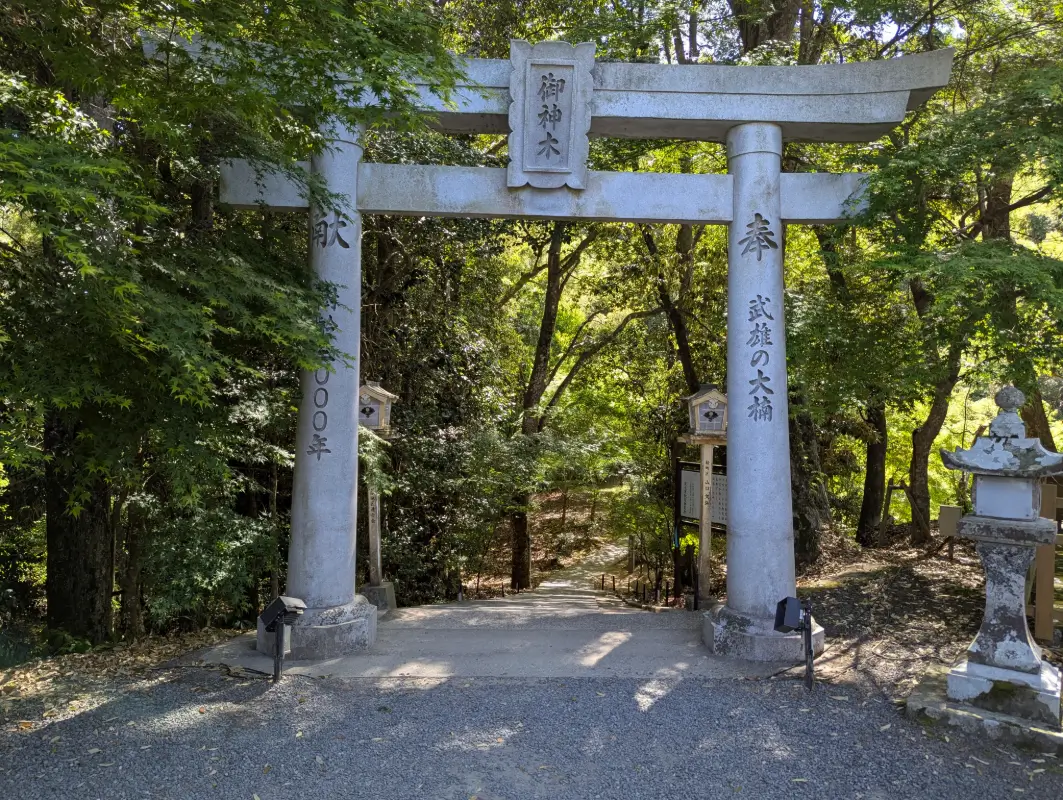
By the time we reached Takeo, the sun had softened.
The road curved gently through quiet town streets until we passed the first stone torii, a gate that didn’t announce itself, only offered passage.
Takeo Shrine doesn’t overwhelm.
It invites.
Founded over 1,200 years ago, the shrine sits in the shadow of towering trees. The main hall is simple and open, its wooden beams weathered smooth, the gravel courtyard quiet beneath our steps. Paper lanterns swayed softly under the eaves. Flags at the entrance stirred in the breeze.
No one spoke. A local man offered a quiet bow and disappeared into the trees.
The kami here, deities of nature, water, and growth, aren’t distant.
They’re part of the landscape.
Their presence isn’t in the structure. It’s in the stillness.
Then, just beyond the side of the shrine, we saw it…
A second tori. A smaller path.
But this wasn’t the path to another shrine building.
It led somewhere else entirely.
Takeo Shrine isn’t a destination.
It’s a threshold.
You pass through its sacred stillness not to stay,
but to go deeper,
into something older than ritual,
and far more enduring than walls.
The Great Camphor Tree of Takeo (武雄の大楠): Rooted in Stillness, Reaching Through Time
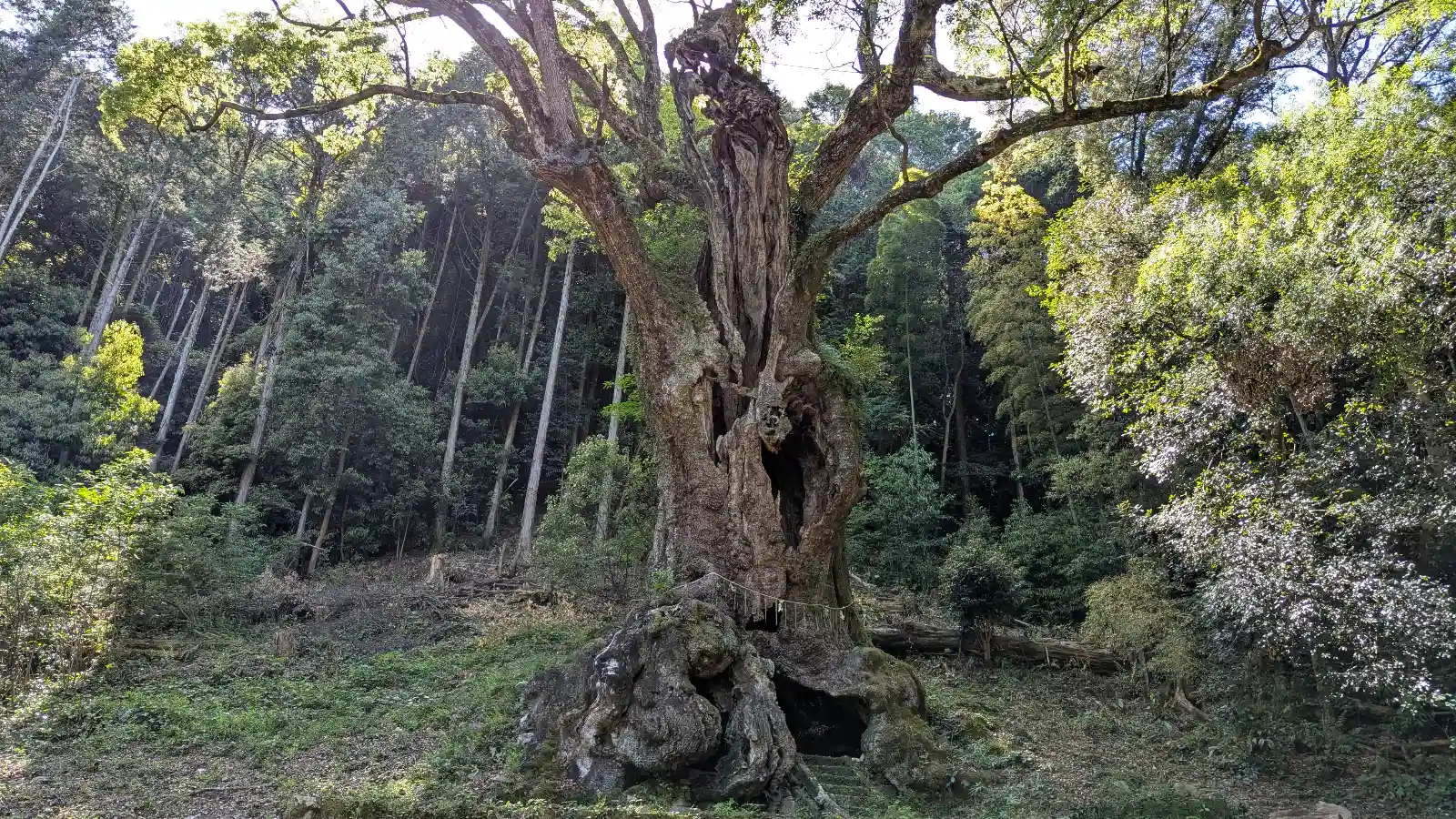
It’s not visible from the main shrine.
You follow a narrow path, come upon one last wooden gate, and stop just before a clearing where even the wind seems to slow.
There, wrapped in filtered light and absolute stillness, stands Takeo no Ōkusu, the Great Camphor Tree of Takeo.
More than 3,000 years old, it towers from the earth like something the land itself chose to remember.
Its heart is hollow, yet it lives.
No plaque could explain it. No photo could hold it.
And standing before it, no one says anything.
There’s no need.
The bark twists like solid smoke.
Green leaves fan gently in the canopy above.
The base is so wide that even seven people holding hands couldn’t wrap around it.
It’s not beautiful in the delicate sense.
It’s beautiful the way cliffs are. Immovable. Enduring.
Inside the hollow, someone has placed a small shrine.
Nothing elaborate, just a quiet offering cradled within something far older than any building.
This isn’t the kind of sacred that gets talked about.
It’s the kind that’s absorbed.
Quietly. Slowly. Without needing words.
We didn’t stay long.
But time didn’t move the same here.
It wasn’t a place to visit.
It was a presence to stand beside.
And in that moment, we understood…
The tree wasn’t old.
We were just new.
Reflections As the Journey Continues…
Some journeys move forward.
This one moved deeper.
We walked through fields where memory had been carefully rebuilt from the earth. Where raised towers and pit dwellings didn’t just represent the past, but held the breath of a world that once was. There were no ruins at Yoshinogari. Only echoes made visible.
From there, the road narrowed. We entered forest, where the sounds changed. The wind shifted, and the steady hush of falling water became the only voice left. At Kiyomizu Waterfall, we didn’t learn anything new.
We remembered something older than knowledge.
That we are small. That the land moves. That silence has weight.
And then, into the shrine. Through the torii. Beneath the canopy.
There’s something sacred about Takeo Shrine, but not because of its architecture.
Because of what it guards.
Because of what it leads you to.
No sign could have prepared us for the tree.
It didn’t ask for reverence, it created it.
No sermon, no chant. Just roots sunk deep into the same ground we’d been walking all day.
It had stood there for thousands of years. And it hadn’t moved. But everything around it had.
Including us.
We didn’t leave with answers.
We left slower. Softer. A little quieter than we arrived.
And sometimes, that’s the only sign that the journey was real.
From Somewhere Off the Map
~ Josh


